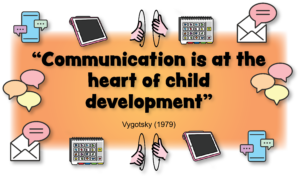Children’s key word signing (KWS) and the Early Years Learning Framework
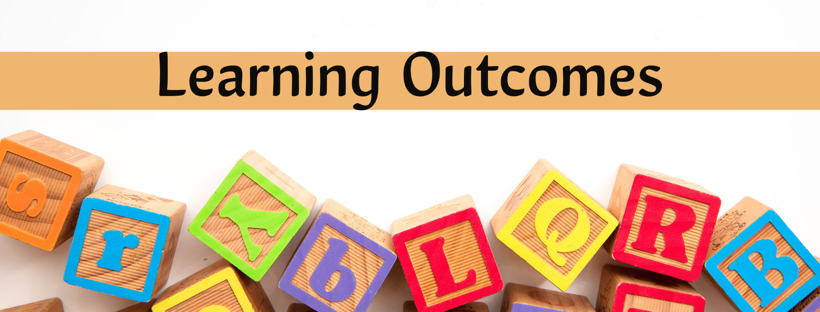
The Early Years Learning Framework (EYLF) learning outcomes were designed to ‘guide curriculum decision-making and assessment to promote children’s learning.’1
In the article below we set out for Educators and decision makers, at early childhood education and care settings, how integrating Children’s key word signing (KWS) at your services will assist you with meeting many of the Learning Outcomes set out under the EYLF.
- For more information on what Children’s key word signing is please click here
- For more information on Children’s key word signing and the Early Years Learning Framework please click here
- For more information on how Children’s key word signing meets the Principles of the EYLF please click here
Please note:
As we highlight how Children’s Key Word Signing (KWS) meets many of the Learning Outcomes set out in the EYLF we will sometimes be referring to research undertaken into baby signing.
Baby Signing and Children’s key word signing (KWS) are very similar, while Key Word Signing (KWS) was original designed for individuals with communication difficulties Professor Loncke at University of Virginia eloquently describes the similarities in rationale between baby signing and what Alternative and Augmentative Communication (AAC) practitioners (who use key word signing (KWS)) are trying to achieve:
“The rationale behind its [baby signing] introduction and use is very similar to what AAC practitioners try to do…the use of gestures or signs (or other modality such as graphic symbols) by and with individuals with intellectual or other developmental limitations is based on exactly similar rationale. The main difference is that the use of the “more accessible” modality may be a more permanent intervention and method of communication [for those with an intellectual or other developmental limitation].“ [Emphasis added]
GROVE, N., 2021. MANUAL SIGN ACQUISITION IN CHILDREN WITH DEVELOPMENTAL DISABILITIES. [S.l.]: NOVA SCIENCE PUB , INC, pp.p30-31.
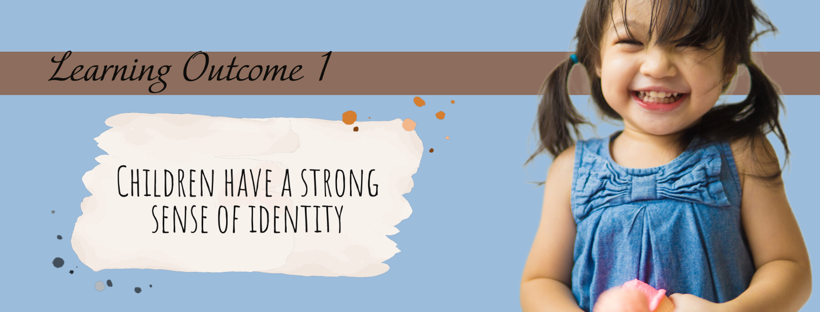
Within this learning outcome the EYLF sets several ways that show evidence of how a child can develop a strong sense of identity (page 24). Below we set out how Children’s key word signing (KWS) can be used as a very effective tool to improve the sense of identity of all children at your early childhood education and care settings.
Children feel safe, secure and supported
Children build secure attachments with one then more familiar educators
A number of studies have shown that Educators that used baby signing in their early childhood education and care settings were:
“more responsive to preverbal children when the children are using signs…better at making eye contact with them, talking to them, being warm and affectionate, and responding to their needs.”2
By adopting Children’s key word signing (KWS) into your early childhood education and care setting you will be setting up your Educators and children up for success by ensuring your Educator’s are very responsive to the needs of the children and build secure attachments with warmth and affection.
Use effective routines to help make predicted transitions smoother
We are aware of the importance of routine for young children to have a feeling of security and avoid what may otherwise be seen as an unpredictable environment. That is why the Early Learning Services Children’s key word signing (KWS) Pack includes signs that fit within the daily life of an early childhood education and care settings, by using signs such as eat, drink, line up, turn as well as others you can assist the children at your early childhood education and care settings to understand what is coming up next at your service from a very early age.
As you become more proficient at signing you can pick up more signs that can be used for bigger transitions such as moving to another room or going on an excursion.
Communicate their needs and comfort and assistance / Openly express feelings and ideas in their interactions with others
Children’s key word signing (KWS) has been specifically designed to ensure that pre verbal and non verbal / non speaking infants and child are able to communicate their needs non verbally. Research into signing in an early childhood education and care settings has shown that pre verbal children have been able to initiate comforting routines; including signing for a particular song during nappy changes and signing mum and dad when wanting to know when they will be picked up.3
In another study it was shown that preverbal children through sign were able, ” to initiate conversations with their caregivers about their own needs and feelings.”4
Therefore it is apparent that Children’s key word signing (KWS) is a fantastic tool to ensure the pre-verbal children at your service will be able to communicate their needs for comfort and assistance.
Establish and maintain respectful, trusting relationships with other children and educators
One important way for a relationship to build between children and their peers, and between children and Educators is by being able to communicate. Raising Children estimate that 1 in 6 children will have a language delay5 if before speaking a child is limited to gestures and other non-verbal prompts it can lead to the child feeling excluded by both peers and educators, resulting in frustration and meltdowns.
However, if the children all have the opportunity to sign and well as speak it bridges the gap for the children with communication difficulties between both other children and educators. By including signing in your early childhood education and care setting you open up more opportunities for children to share their ideas, thoughts and desires which are essentially for building strong respectful and trusting relationship.
Initiate interaction and conversation with trusted educators
As stated in the principles article, research showed that using signs in an early childhood education and care setting allowed
pre-verbal children initiate conversations about their needs and feelings. It also allows children to “hold extended conversations with their caregivers as part of everyday interactions.”6 Adopting Children’s key word signing (KWS) into your early childhood education and care setting will greatly improve the ability of the children to be able to initiate interactions from an early age improving bonding and trust with your Educators.
Confidently explore and engage with social and physical environments
Research into caregivers who used baby signs with their infants revealed that the caregivers showed, “a stronger appreciation for the autonomy and desires of the infant” and “encouraged significantly more independent actions than did non signing [carergivers].“7
Therefore it is likely that using signing will improve the appreciation of the children’s autonomy at your service and encourage independent actions in their social environment.
Baby signing has also been shown to improve self esteem and self confidence in children that use them,8 it is well known that self confident children are more likely to explore their environment that those that lack confidence and dysregulated children that are unable to express their thoughts and feelings.
Initiate and join in play
A pre-verbal / non-verbal / non-speaking child is more likely to join in and play with those that they can communicate with and where they can feel accepted.
It has been shown if a child uses key word sign or other methods of Alternative and Augmentative Communication (AAC) they are often stigmatised if they are the only child communicating in this way. However if all Educators and children are using multi-modal methods to communicate than there is no stigma, and the child feels more confident with joining in with their peers.
Children develop their emerging autonomy, inter-dependence, resilience and sense of agency
Demonstrate increasing awareness of the needs and rights of others
By adopting Children’s key word sign (KWS) at your early childhood education and care setting you are encouraging children to become aware of the needs and rights of others to communicate. While many children will be able to start communicating verbally, by teaching children sign, it will make them aware that other children’s have rights and needs different from their own and encourage children to accept and embrace the differences of others.
Increasingly co-operative and work collaboratively with others
Children’s key word sign (KWS) will provide children at your service the best opportunity for co-operation and to work collaboratively as the inclusive nature of signing ensures all children the best possible opportunity to communicate with each other and join in.
Demonstrate an increased capacity for self regulation
As stated in the principles article, baby signing has been used by children to emotionally regulate before they are verbal, whether this is requesting a song during a nappy change, signing mum and dad to be informed of how long until pick up, signing feelings or even using signs to remind themselves of their own behaviour.9
By introducing signs you will be able to provide the children with tools to assist their self regulations, and from an early age provide them with the ability to ask for comfort or express their needs before they can verbally ask. Providing them with a safe space where they know their feelings and needs can be heard will be a fantastic tool for their journey to self regulation.
Children learn to interact with others with care, empathy and respect
As stated above,by using Children’s key word signing (KWS), it will assist with a child’s understanding that not everyone is the same, with other children having different needs to themselves.

Using Children’s key word signing (KWS) is an excellent way to open up discussions about different languages and cultures. While Children’s key word signing (KWS) is a communication tool and not a language the signs are borrowed from Australian Sign Language (Auslan). A participant in a recent study into key word signing (KWS) within Early Learning Services stated the following:
“A great way to introduce key word sign is by engaging the children in conversations about the diversity of languages. Discuss foreign languages.. Discuss foreign languages such as French and German or other languages that may [be] represented in the centre. Explain to children, that not everyone communicates through words, some groups of people such as [Australian] Deaf Community speak through Auslan. (K.D)” 10
The Deaf Community who use Auslan have a strong culture and rich history which we recommend you explore. We strongly encourage you to learn the differences between Auslan and Children’s Key Word Sign and take steps to ensure you are being respectful when using key word signs within your service. We further encourage you to invite someone from the Deaf Community to share their beautiful language with you and introduce you to their culture and their Deaf identity.
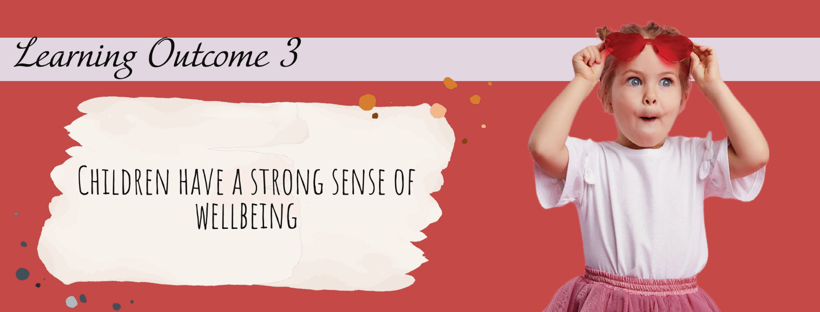
Within this learning outcome the EYLF sets several ways that show evidence that children have a strong sense of wellbeing. Below we set out how Children’s key word signing (KWS) can be used as a very effective tool to assist the children at your early childhood education and care settings have a strong sense of wellbeing.
Children become stronger in their social and emotional wellbeing
As stated above Children’s key word signing (KWS) is fantastic for emotional regulation and as a socialisation tool. Baby sign use in toddlers have been shown to reduce frustrations and meltdowns as it allows them to pre-verbally communicate their needs and feelings to others.10 Baby signing has been show to assist them control their own behaviour in response to a caregivers request.11
Socially Children’s key word signing (KWS) provides more opportunities for social interactions between all children, as they are able to communicate to both verbal and non-verbal / non-speaking children, which is vital for learning social skills. A longitudinal study on baby signing found that children that were taught baby signing had reportedly better social skills that the non signing participants.12
Further, the use of signs has been shown to assist with dangerous behaviour such as hitting, and other behaviours that may need redirecting for the sensory needs of others (such as high pitched whinges), in both instances the use of signing to request a ‘book’ and wanting ‘more’ resulted in the the undesirable behaviours being replaced by signs.13
Signing also assist the Educators as studies have found that caregivers that use sign finding it easier to respond and calm down their children as they were able to identify the cause of the upset through sign, improving the emotional wellbeing of the child.14
Children take increasing responsibility for their own health and physical wellbeing
Engage in increasing complex sensory-motor skills and movement patterns / combine gross and fine motor movements and balance to achieve complex patterns of activity including dance creative movement and drama
Using signing within your early childhood education and care settings means that children will from a very early age try and mimic your hands, Petitto15 stated that this ‘hand babbling’ uses the same 3 necessary language components as vocal babbling (which will be discussed in Learning Outcome 5). This ‘hand babbling’ increases the infants and toddler attention on their hands, their movements and handshapes. Studies found that infants and toddlers that had been signed to, had improved hand-eye co-ordination16 and demonstrated “a significant improvement in physical development….[and]….fine motor development” than those not exposed to signing.17
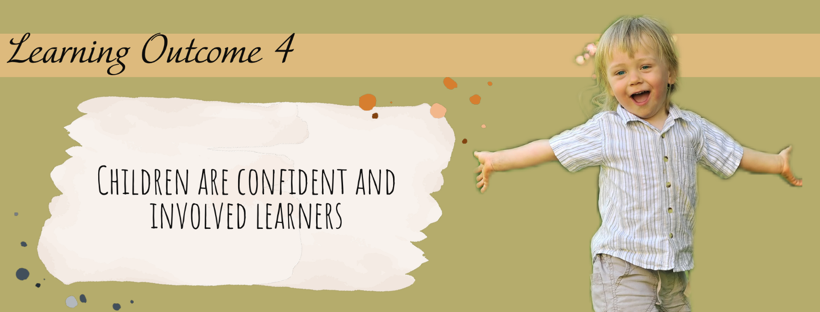
Within this learning outcome the EYLF sets several ways that show evidence that children are confident and involved learners. Below we set out how Children’s key word signing (KWS) can be used as a very effective tool to assist the children at your early childhood education and care settings to become confident and involved learners.
Children develop dispositions for learning such as curiosity, cooperation, confidence, creativity, commitment, enthusiasm, persistence, imagination and reflexivity
express wonder and interest in their environments
By using Children’s key word signing (KWS) it allows infants and children at your early childhood education and care settings to express themselves and provide you with an insight into their personality at an early age. With this knowledge it makes it easier for Educators to tailor to child’s environment to their interests and to understand what they can do to assist in peeking the children interest and wonder into their environment.
follow and extend their own interests with enthusiasm, energy and concentration
As stated above baby signing has been shown to improve self esteem and self confidence in children that use them8, this self confidence and ability to communicate with others will allow the children at your early childhood education and care settings to follow and extend their own interests with confidence, enthusiasm and energy.
Children resource their own learning through connecting with people, place, technologies and natural and processed materials
engage in learning relationships
When you integrate Children’s key word signing into your service you are naturally engaging in a continuous learning relationship with the children. The Educators’ will be continuously teaching children new signs at the pace necessary for each child, and use signs for strategies to ensure comprehension and assist with transitions across the learning environments at a service.
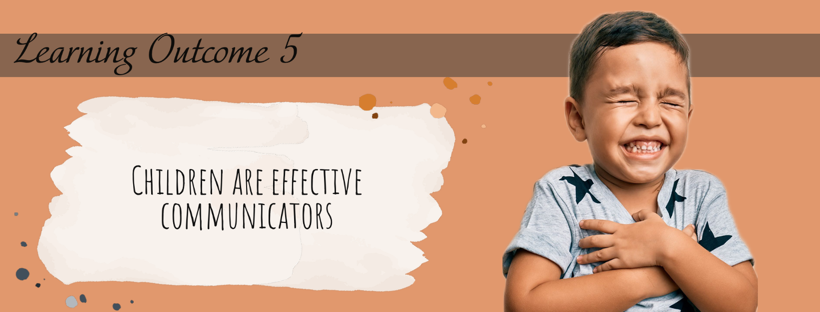
Children interact verbally and non-verbally with others for a range of purposes
engage in enjoyable interactions using verbal and non-verbal language
Children’s key word signing (KWS) is a communication tool that is designed to encourage both verbal and non-verbal communication. As stated above, studies have shown if signing is used on a regular basis, infants can sign from 5 months although most babies sign from around 8-10 months, once they have become aware of their hands.
Furthermore, with an estimated 1 in 6 children have a language delay it ensures that a child is able to communicate (through sign) with educators and peers while they are non-verbal / non-speaking.
Research has found that if key word signing or other Alternative and Augmentative Communication (AAC) tools are limited to the non-verbal / non-speaking individuals and a limited number of communication partners they suffer from stigmatisation and often experience “frequent and widespread exclusion.”18 Using Children’s key word signing (KWS) within your Early Learning service is a step towards inclusivity for all children and ensure that even non-verbal / non speaking children are able to enjoyable interacting with as many children and educators as possible.
It is worth noting that there has been extensive research into baby signs and language production, mainly prompted by concern that baby sign may delay speech due to babies being able to communicate through sign. However, it was actually discovered in a longitudinal study that infants who were taught baby signs had significantly better receptive language (understanding of what was being said to them) and expressive language (being able to speak to express themselves) than non-signing infants.19 Signing babies also met their word-count milestones earlier, 20 and several other studies repeated the findings that infants and toddlers exposed to signing and speech frequently used spoken language before their peers exposed only to spoken language.21
Similarly to baby signing, Key Word Signing was found to “facilitate early communication, increase vocabularies and facilitated shared communication.”22 A study by Leech and Cress found that the most effective way for a child to produce target words was “through routine and play structure combined with access to AAC [Alternative and Augmentative Communication].“23
There are many reasons for this but the reasons put forward by researchers have been that when children sign it encourages more and varied communication and more word labels being used by caregivers in response to signs,24 and the use of signs for only key words assists in segmenting words from each other in running speech, which in turn helps build up their vocabulary which is important for the acquisition of language.25
Infants that have been seen to gesture earlier, including manual pointing, or more frequently have been found to have larger vocabularies than there peers, therefore it is apparent that when an Educator encourages signs with infants and toddlers it is likely that the numbers of gestures of the children will increase and may assist them in their expressive communication long term.26
respond verbally and non-verbally to what they see, hear, touch, feel and taste
We encourage you, once you have completed our training and become familiar with the signs in the initial pack, to carry on your signing journey and expand your signing vocabulary to include signs for your early learning environment. This will ensure that you will be able to provide opportunities to all children whether verbal or non-verbal / non-speaking.
exchange ideas, feelings and understandings using language and representations in play
Our Children’s key word signing (KWS) pack assists with integrating both verbal and non-verbal (signing) communication through music, books and play. We provide you with several resources to ensure that all areas of the children’s learning environment contains signing components.
As stated above, baby signing has been shown to give children the ability to initiate conversations in regard to their emotions and feelings and to prompt other conversations with educators before they can speak.
Children engage with a range of texts and gain meaning from these
view and listen to printed, visual and multimedia texts and respond with relevant gestures, actions, comments and/or questions
Our Children’s key word signing Early Learning Service pack comes with a book “Sunny Bear’s Messy Day,” this is a simple book designed to engage the young reader, it contains 12 simples signs, one on each page with the last few pages containing extra signs for when the Educator’s become more confident. As stated above the use of signs during speech assists children to better segment words from running speech, which assists not only with the vocabulary, but the understanding of the text itself.
Studies have shown that children gain most from reading with books when caregivers are actively engaged with the children and reading.
sing and chant rhymes, jingles and songs
The Children’s key word signing pack also includes a song book with 10 songs (with corresponding signs) which will introduce you to many signs that will not only be useful for within your service but also a great way to engage the children at your service.
Similarly to action songs it will encourage the children to sing along, signs will help with understanding and fine motor skills, creativity and builds recognition of letters and songs.27
begin to be aware of the relationships between oral, written and visual representations
When you start using signing in your Early Learning Service we strongly advise you use physical objects where possible when introducing signs, for example ball (‘ball’) or cot / sleeping mat (‘bed’). This is because research indicates that baby signs works best for receptive communication when words are show visually (concrete item), kinaesthetically (sign) and orally (spoken), it also assists a child’s vocabulary development.28
Therefore once you start reading to your children, signing and showing them the visual pictures they were already have receptive understanding of the relationship between oral and visual representation and will assist them in understand the link to written representation too.
Children use information and communication technologies to access information, investigate ideas and represent their thinking
engage with technology for fun and to make meaning
Our Children’s key word signing pack provides all Educator’s with access to our online member resources. This includes access to videos of the 10 songs in our song booklet and also a video of the story book ‘Messy Day’ being read with signs. This provides children the ability to learn the songs and story from both Educator’s and by using information and communication technology. This provides a fun aspect to the signs they are learning and to assist them in making meaning of the signs within their early childhood education and care settings.
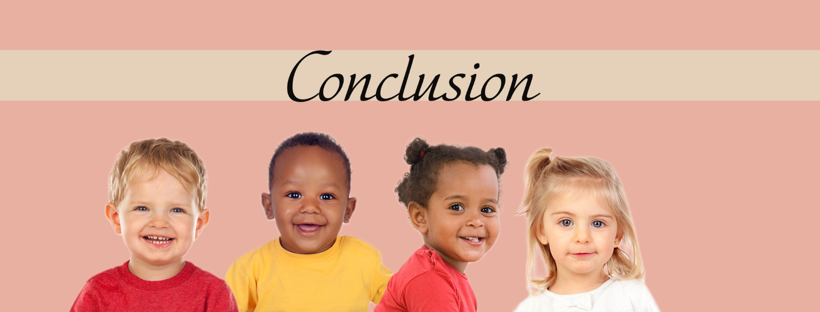
With the above information it is difficult to ignore that most early childhood education and care settings should be adopting Children’s key word signing. It is apparent the benefits are wide-ranging for all children regardless of neurotype or disability.
The inclusive communication benefits for all children make this a valuable tool for any setting with children. If not adopted by a whole service, a non-verbal / non-speaking child is likely to feel excluded and likely face stigma if they are alone in adopting AAC tools.
Please note, as well as signing we also recommend implementing visual communication boards for your service (which we are able to provide on request).
Further, the other benefits of Children’s key word signing, such as improving fine-motor skills, reduction in meltdowns, improved responsiveness and bonding in caregivers and finally assisting verbal language highlight just how important it is to implement this inclusive tool as soon as possible.
Please contact us if you require any more information or we can assist your any further in your Children’s key word signing (KWS) needs.
1 Belonging, Being, Becoming: The Early Years Learning Framework for Australia page 5 (https://www.acecqa.gov.au/sites/default/files/2018-02/belonging_being_and_becoming_the_early_years_learning_framework_for_australia.pdf accessed 10 September 2022) page 22
2 https://successforkidswithhearingloss.com/wp-content/uploads/2012/01/Signing-with-Babies-and-Children-Vollotton.pdf (accessed 13 September 2022)
3 Karsten, Ashley E., et al. “Toddlers take emotion regulation into their own hands with infant signs.” YC Young Children72.1 (2017): 38-43.
4 https://successforkidswithhearingloss.com/wp-content/uploads/2012/01/Signing-with-Babies-and-Children-Vollotton.pdf (accessed 13 September 2022) p5 para 3
5 https://raisingchildren.net.au/babies/development/language-development/language-delay
6. https://successforkidswithhearingloss.com/wp-content/uploads/2012/01/Signing-with-Babies-and-Children-Vollotton.pdf (accessed 13 September 2022) p5 para 3 re: Vallotton, Claire D. “Signs of emotion: What can preverbal children “say” about internal states?.” Infant Mental Health Journal: Official Publication of The World Association for Infant Mental Health 29.3 (2008): 234-258.
7 Ramstad, Alaina. “Baby Sign’s Developmental Benefits.” (2019). p33 re Kirk, Elizabeth, et al. “To sign or not to sign? The impact of encouraging infants to gesture on infant language and maternal mind‐mindedness.” Child development 84.2 (2013): 574-590.
8 Zeyl, Gabrielle. “The Effects of Gesture on Early Language Production.” (2019). re: Daniels, Marilyn. “Seeing Language: The Effect of Sign Language on Vocabulary Development in Young Hearing Children.” (1995).; Dayanim, Shoshana, and Laura L. Namy. “Infants learn baby signs from video.” Child Development 86.3 (2015): 800-811.; Doherty-Sneddon, Gwyneth. “The great baby signing debate.” Psychologist 21.4 (2008): 300-303.; Mueller, Vannesa, Amanda Sepulveda, and Sarai Rodriguez. “The effects of baby sign training on child development.” Early Child Development and Care 184.8 (2014): 1178-1191.”
9 Karsten, Ashley E., et al. “Toddlers take emotion regulation into their own hands with infant signs.” YC Young Children72.1 (2017): 38-43
10 Cologon, Kathy, and Zinnia Mevawalla. “Increasing inclusion in early childhood: Key Word Sign as a communication partner intervention.” International journal of inclusive education 22.8 (2018): 902-920. page 11
11 Daniels, Marilyn. “Seeing Language: The Effect of Sign Language on Vocabulary Development in Young Hearing Children.” (1995)
12 https://successforkidswithhearingloss.com/wp-content/uploads/2012/01/Signing-with-Babies-and-Children-Vollotton.pdf (accessed 13 September 2022) p5 re: Vallotton, Claire. “Infants take self-regulation into their own hands.” Zero to Three 29.1 (2008): 29-34.
13 Acredolo, Linda P., and Susan Goodwyn. Baby signs: How to talk with your baby before your baby can talk. Random House, 2000.
14Pizer, Ginger, Keith Walters, and Richard P. Meier. “Bringing up baby with baby signs: Language ideologies and socialization in hearing families.” Sign language studies 7.4 (2007): 387-430; https://successforkidswithhearingloss.com/wp-content/uploads/2012/01/Signing-with-Babies-and-Children-Vollotton.pdf (accessed 13 September 2022) p5 para 3 re: Góngora, Ximena, and Chamarrita Farkas. “Infant sign language program effects on synchronic mother–infant interactions.” Infant behavior and development 32.2 (2009): 216-225.
15 Zeyl, Gabrielle. “The Effects of Gesture on Early Language Production.” (2019). re: Petitto, Laura Ann, et al. “Baby hands that move to the rhythm of language: hearing babies acquiring sign languages babble silently on the hands.” Cognition 93.1 (2004): 43-73.
16 Okyle C (2017) Show me a sign baby! School Library Journal NY https://www.slj.com/story/show-me-a-sign-baby-preverbal-kids-and-sign-language (accessed 15 September 2022)
17 Mueller, Vannesa, Amanda Sepulveda, and Sarai Rodriguez. “The effects of baby sign training on child development.” Early Child Development and Care 184.8 (2014): 1178-1191.
18 Light, Janice, and David Mcnaughton. “Designing AAC research and intervention to improve outcomes for individuals with complex communication needs.” Augmentative and Alternative Communication 31.2 (2015): 85-96. as stated in Cologon, Kathy, and Zinnia Mevawalla. “Increasing inclusion in early childhood: Key Word Sign as a communication partner intervention.” International journal of inclusive education 22.8 (2018): 902-920. p4
19 Goodwyn, Susan W., Linda P. Acredolo, and Catherine A. Brown. “Impact of symbolic gesturing on early language development.” Journal of Nonverbal behavior 24.2 (2000): 81-103.
20 Seal, Brenda C., and Rory A. DePaolis. “Manual activity and onset of first words in babies exposed and not exposed to baby signing.” Sign Language Studies 14.4 (2014): 444-465.;
21 Seal, Brenda. “About baby signing.” The ASHA Leader 15.13 (2010): online-only.
22 Cologon, Kathy, and Zinnia Mevawalla. “Increasing inclusion in early childhood: Key Word Sign as a communication partner intervention.” International journal of inclusive education 22.8 (2018): 902-920. page 2 re: Cress, Cynthia J., and Christine A. Marvin. “Common questions about AAC services in early intervention.” Augmentative and alternative communication 19.4 (2003): 254-272.; Dunst, Carl J., Diana Meter, and Deborah W. Hamby. “Influences of sign and oral language interventions on the speech and oral language production of young children with disabilities.” Center for Early Literacy Learning 4.4 (2011): 1-20.;Vandereet, Joke, et al. “The role of gestures in the transition from one‐to two‐word speech in a variety of children with intellectual disabilities.” International Journal of Language & Communication Disorders 46.6 (2011): 714-727.
23 Zeyl, Gabrielle. “The Effects of Gesture on Early Language Production.” (2019). p 12 re: Leech, Emily R. Baumann, and Cynthia J. Cress. “Indirect facilitation of speech in a late talking child by prompted production of picture symbols or signs.” Augmentative and Alternative Communication 27.1 (2011): 40-52.
24 Ramstad, Alaina. “Baby Sign’s Developmental Benefits.” (2019). p11 re Olson, Janet, and Elise Frank Masur. “Mothers respond differently to infants’ gestural versus nongestural communicative bids.” First Language 33.4 (2013): 372-387.
25Ramstad, Alaina. “Baby Sign’s Developmental Benefits.” (2019). p24 re: Mueller, Vannesa, Amanda Sepulveda, and Sarai Rodriguez. “The effects of baby sign training on child development.” Early Child Development and Care 184.8 (2014): 1178-1191.
26 Ramstad, Alaina. “Baby Sign’s Developmental Benefits.” (2019). p11 Brooks, R. & Meltzoff, A. N. (2008). Infant gaze following and pointing predict accelerated vocabulary growth through two years of age: a longitudinal, growth curve modeling study. Journal of Child Language 35, 207–20. and Walker, Dale, et al. “Language intervention research in early childhood care and education: A systematic survey of the literature.” Early Childhood Research Quarterly 50 (2020): 68-85.
27 Razak, Noor Arina Nadiah Abdul, and Melor Md Yunus. “Using action songs in teaching action words to young ESL learners.” International Journal of Language Education and Applied Linguistics (2016).; Khairul, Nurnadirah & Abdul Aziz, Azlina. (2020). The Use of Action Songs in Developing Vocabulary among pupils of the rural area. International Journal of Scientific and Research Publications (IJSRP). 10. 40. 10.29322/IJSRP.10.02.2020.p9808.
28 Zeyl, Gabrielle. “The Effects of Gesture on Early Language Production.” (2019). re: Daniels, Marilyn. “Seeing Language: The Effect of Sign Language on Vocabulary Development in Young Hearing Children.”

